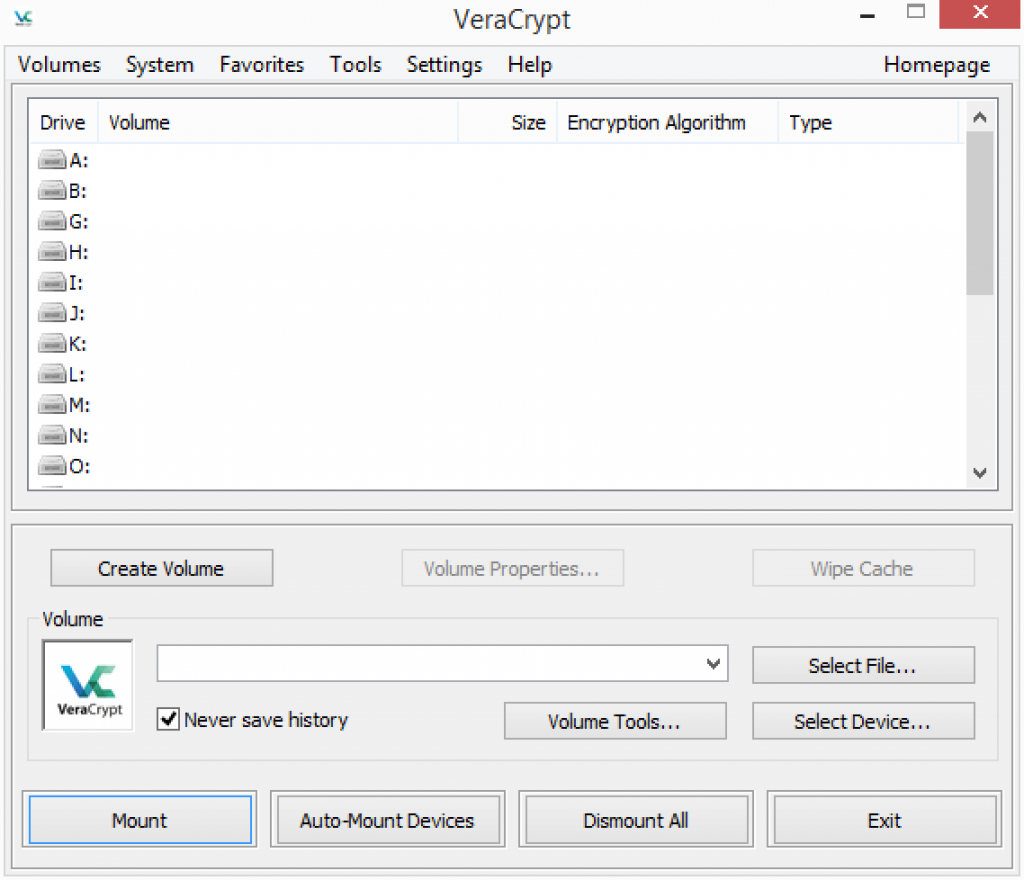

?d?d?d?d is the mask (where ?d represents a numeric value 0-9)Īnother option would be to use a wordlist, like so: hashcat.exe -w 1 -m 13721 hash.tc wordlist.txt.hash.tc is the hash we generated in the step before.-m 13721 is the specific mode for cracking VeraCrypt’s SHA 512 bytes encryption.-w 1 is the workload profile (where 1 is low profile and 4 is the max).-a 3 is the attack mode for brute-force/mask.😉Īdvanced in the sense that you can use CPU, GPU, pool computers together over the network and much more.Īnyway, let’s say we encrypted our container with a 4 digit numeric password, we’d run the following command: hashcat.exe -a 3 -w 1 -m 13721 hash.tc ?d?d?d?d If you’re unfamiliar with hashcat, its an advanced “password recovery” tool. Note that it should already be included with Kali Linux, Parrot and pretty much every other security-based Linux distro – although the GPU drivers, not so much. Make sure you’ve downloaded hashcat and extracted it to a safe location. Now that we have the hash, let’s get to cracking! If you are looking for instructions for a hidden or boot volume, check this link: Hashcat – VeraCrypt. The result is we should have a file called: target_hash.tc (this is the encrypted key we’ll decrypt) In the command above we specify the input file (if=), then the output file (of=), number of bytes to read (512) and the count which is 1 - number of times it should read the amount of bytes specified. If you are using Linux then you should already have dd in there by default.
#Veracrypt tutorial download#
For this I had to download dd for Windows.
#Veracrypt tutorial windows#
You’ll notice I’m running it under Windows (.exe) so that I can do the whole process in one shot. We’ll use dd command to extract it: dd.exe if=.\encrypted\target of=.\encrypted\target_hash.tc bs=512 count=1 In this case, it will be the first 512 bytes of the container file. So assuming you have a standard container set up, we have to extract the encrypted key. I’ll provide the links with instructions for a hidden volume and a boot volume as well below.

Let’s find out! 🙂 Extracting VeraCrypt Hashįor this tutorial we’ll be using a standard VeraCrypt container along with the default encryption and hash algorithms.
#Veracrypt tutorial password#
I caught myself thinking: how long would it actually take to brute-force specific password masks? That’s when I decided to put it to the test using Hashcat and an operating system equipped with a graphics card. Long enough to remember when it was, originally, called TrueCrypt before the project was abandoned. In this episode we’ll take a look at brute-forcing a VeraCrypt container using Hashcat.įor starters I want to say that I’m a huge VeraCrypt fan and use it all the time, for a long time.


 0 kommentar(er)
0 kommentar(er)
